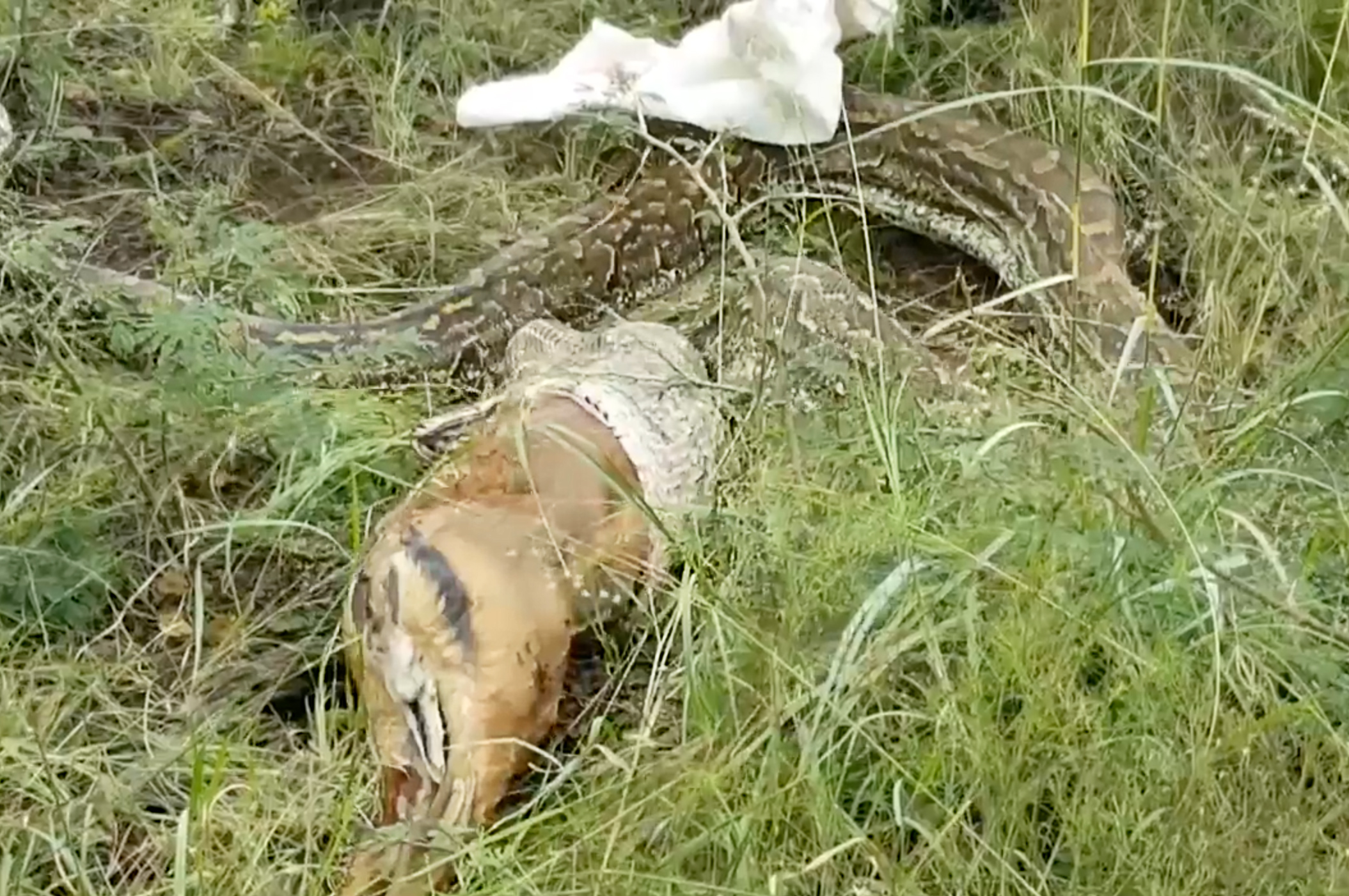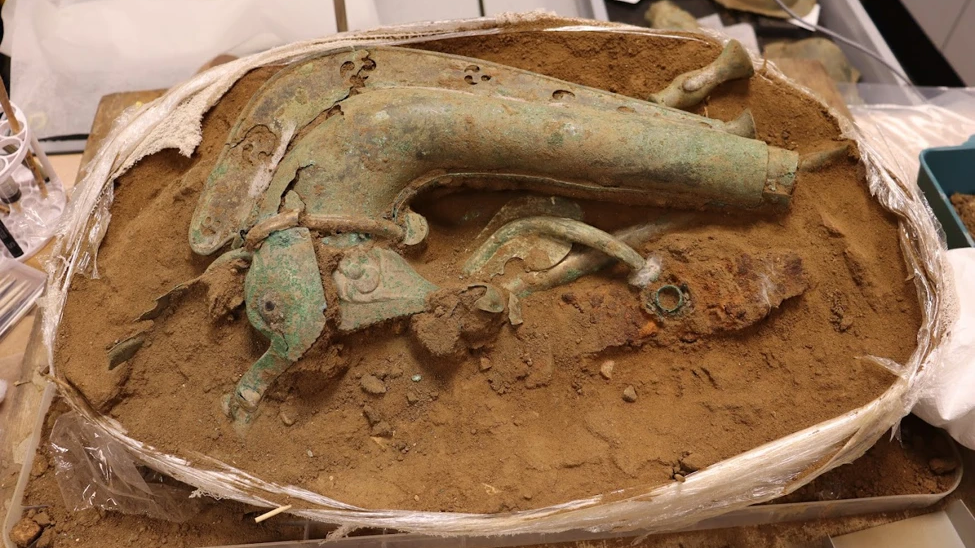Blergh! Why a 13-Foot Python Puked Up an Impala (and How)
The video shows a 13-foot (4 meters) African rock python (Python sebae) being interrupted by a snake catcher as the snake attempts to down a young impala on a farm in South Africa. According to Maroela Media, the snake catcher, Arthur Roden, had been called to a farm in the province of Limpopo by a farmer who suspected that this impala wasn't the first the python had taken on his land. (Impala are farmed in South Africa as game animals for trophy hunters.)
The snake probably lost its lunch because it was disturbed, said Alan Resetar, the collection manager for amphibians and reptiles at The Field Museum in Chicago. Snakes are vulnerable when they're eating and often abandon their prey if bothered, he said. [In Images: Hungry Python Eats Porcupine Whole]
"Even in the field sometimes when I'm catching snakes, they'll upchuck what they're eating," Resetar told Live Science.
Big gulp
Rock pythons are Africa's largest snakes, according to the nonprofit Wildscreen Arkive. They can grow to be more than 26 feet (7.9 m) long, and they kill by constriction. They very rarely attack humans, though fatal attacks have occurred. In 2013, a pet rock python escaped from an enclosure in an apartment in New Brunswick, Canada, and killed two young boys who were sleeping there.
Like most snakes that swallow prey whole, the rock python has an incredibly flexible jaw. The two halves of the lower jaw can move independently and are connected by a ligament that stretches. The jaw is also connected at the back of the snake's skull by three joints to allow for major movement. The bones of the skull are reduced and streamlined, Resetar said.
"You'd be surprised at how little there actually is to the snake skull itself, except for the braincase," Resetar said. The bones that protect the brain are quite strong, he said, which prevents the brain from being damaged by an errant hoof or antler passing by.
Snakes have other adaptations to allow for huge mouthfuls, including stretchy skin at the base of the mouth, Resetar said. They also have curved teeth that hook into the prey and help steady it as they "walk" their jaws up and over their meal.
Get the world’s most fascinating discoveries delivered straight to your inbox.
Eyes bigger than stomach?
The rock python in the video from South Africa was ambitious to go after prey that large, but it probably would have been successful at scarfing the impala if it hadn't been disturbed, according to Resetar.
"Snakes are just fantastic as far as how much they can take down," he said.
Occasionally, a snake's eyes will be larger than its stomach, though. Resetar once came across a garter snake (Thamnophis sirtalis) in the desert trying to swallow a huge American toad (Anaxyrus americanus).
"The snake was doing its best to swallow it, and the toad was doing its best to keep out of the snake's jaws," Resetar said. Eventually, the snake had to give up and let the too-big toad hop away.
On occasion, prey gets a posthumous victory. In 2015, a cyclist in South Africa came across a python with a large lump in its abdomen. A few days later, the same snake was found dead. A reptilian autopsy found a spiny porcupine inside the python's belly. The snake might have fallen, and the prey's quills might have pierced the snake's insides on impact.
In another famous case, a Burmese python was found in Everglades National Park split nearly in two, with a practically intact alligator corpse sticking out of its belly. It's not clear whether the python died in the process of swallowing its prey or shortly thereafter, but alligator-versus-python matchups have become common in the Everglades as the invasive pythons take hold in the region.
Original article on Live Science.

Stephanie Pappas is a contributing writer for Live Science, covering topics ranging from geoscience to archaeology to the human brain and behavior. She was previously a senior writer for Live Science but is now a freelancer based in Denver, Colorado, and regularly contributes to Scientific American and The Monitor, the monthly magazine of the American Psychological Association. Stephanie received a bachelor's degree in psychology from the University of South Carolina and a graduate certificate in science communication from the University of California, Santa Cruz.




